
Families at Fort Rodd Hill
Fort Rodd Hill and Fisgard Lighthouse National Historic Sites
Did you know that families have enjoyed spending time at Fort Rodd Hill since it was built in the 1890s?
Some families lived year-round in the Warrant Officer’s Quarters or wooden huts. Other families camped in big canvas tents during annual summer training camps. From the photos in our collection, we can see that those early families had fun exploring Fort Rodd Hill, much like visitors do today!
Warrant Officer’s Quarters | Summer Camp | Wooden Huts | Permanent Married Quarters | Fun Moments
The Warrant Officer’s Quarters
The Warrant Officer’s Quarters was built in 1897 to house a Master Gunner and his family. It had a kitchen, pantry, and living room on the main floor. Upstairs there were two large bedrooms and a third smaller room off the master bedroom. Until after the Second World War, Master Gunners lived at Work Point. So, the highest-ranking Non-Commissioned Officer at Fort Rodd Hill lived in the Warrant Officer’s Quarters.
We know quite a few names of the families who lived in the Warrant Officer’s Quarters over the years, including two brothers from the same family: the Buxtons. We only have photographs of a few of these families. If you possess any additional details regarding the soldiers and their families, please let us know.
- 1906 to ? – Major A.A. Warder
- 1910 to 1911 – Bombardier Titch Buxton and family
- 1911 to 1916 – Sergeant Fred Buxton and family
- 1916 to 1919 – Lottie Collings and Family
- 1919 to 1928 – Titch Buxton and Family
- 1934 to 1935 – Sergeant Tom Eastick
- 1936 – Bombardier Bill Wharton and family
- 1936 to 1938 – Bombardier Bill Cameron and family
- 1938 to 1939 – Gunner B. Henderson and family
- 1939 to 1945 – During WWII the Warrent Officer’s Quarters was used as an officer’s mess
- 1945 to 1946 – Warrant Officer Class 1 (Master Gunner) T.G. McIndoe
- 1946 to 1947 – Master Gunner Jack Rippengale and family
Families who lived in the Warrant Officer’s Quarters
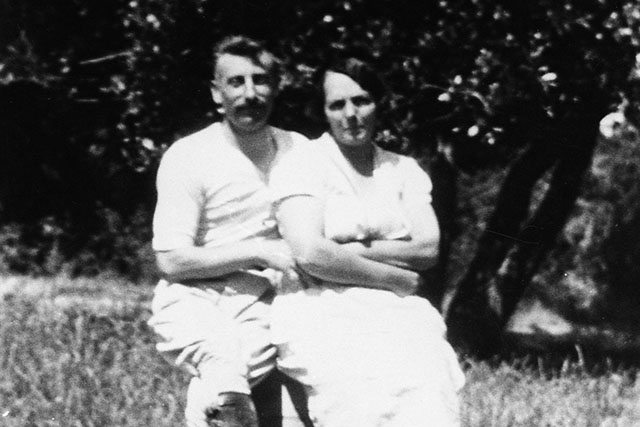
Percival (Titch) Buxton – 1910 to 1911 and 1919 to 1928
Titch and his brother Fred both joined the British army in England and served in Esquimalt as part of the British garrison. They transferred to the Royal Canadian Artillery in 1907.
The first Buxton brother to move into the Warrant Officer’s Quarters was Percival Herbert Bertram (Titch) Buxton and his wife Phoebe, who moved into the house by 1910 when Titch was a Bombardier. They lived in the house until late 1911. Their second child, Edith, was born in the house on January 5, 1911.
In 1919, Titch Buxton, then a Sergeant, returned to live in the Warrant Officer’s Quarters with his growing family. During those years, Titch converted several older wooden structures at Fort Rodd Hill into farm buildings. Photos from this period show family members with turkeys, pigs, and cows. Titch Buxton also operated the canteen at Fort Rodd Hill when the 5th (BC) Regiment held their summer training camps at Fort Rodd Hill.

Fred Buxton – 1911 to 1916
When Titch Buxton and his family moved out of the Warrant Officer’s Quarters, his brother Frederick George Buxton moved in. Fred, along with his wife Alice and their two young children Maude and Frederick Jr., lived there until 1916.
Sergeant Fred Buxton retired from the army shortly after WWI and bought a property from the Dunsmuir family just northwest of Fort Rodd Hill where he established a farm. Fred hired the grazing rights on the Fort Rodd Hill property during the 1920s and built the Dugout Hotel in 1928. The Dugout was a popular local pub on the north end of the Coburg Peninsula (Esquimalt Lagoon Spit).
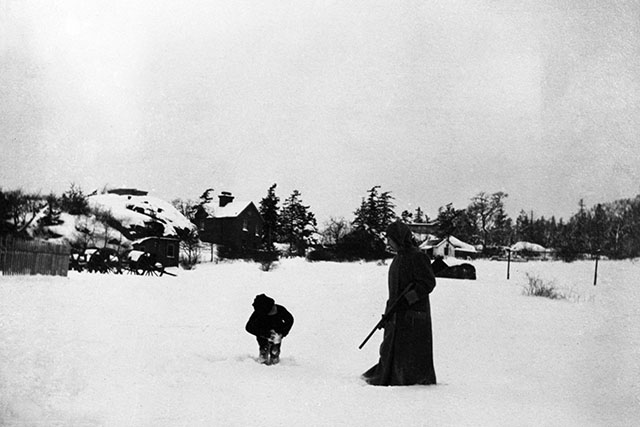
Lottie Collings – 1916 to 1919
Sergeant Lottie Collings, along with his wife and young son Ashton (Ashe), lived in the Warrant Officer’s Quarters from 1916 to 1919. They were living there during “the great snow” of November 1916. This photograph captures Mrs. Collings and Ashe out in the snow. Mrs. Collings is holding a rifle, reportedly because there was a cougar in the area at the time.
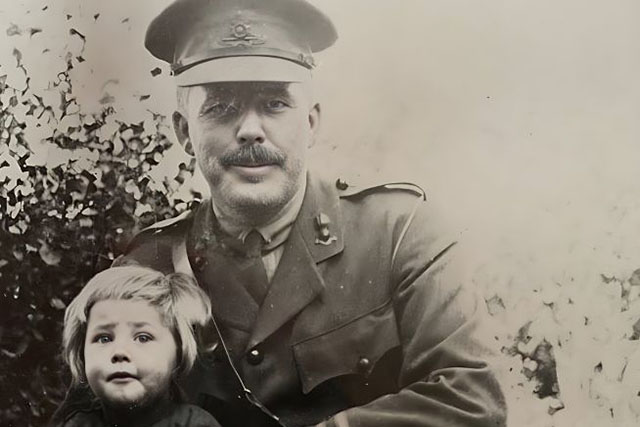
Sergeant Tom Eastick – 1934 to 1935
Sergeant Tom Eastick and his family lived in the Warrant Officer’s Quarters for a short time in the 1930s.
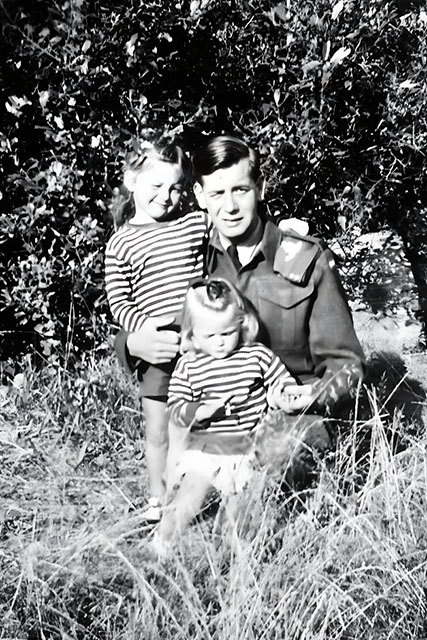
Master Gunner Jack Rippengale – 1946 to 1947
John Edward (Jack) Rippengale had three unique roles at Fort Rodd Hill. In 1937, Rippengale joined the local military and lived in the barracks at Fort Rodd Hill before World War II. He served for 20 years and rose to the rank of Captain.
In 1946, Jack, his wife Sybil, and daughters Joan and Wendy moved into the Warrant Officer’s Quarters. Jack had become a Master Gunner and the Warrant Officer in charge of Fort Rodd Hill. A third daughter, Judy, was born in the house in 1946.
In 1965, Jack Rippengale returned to Fort Rodd Hill as the National Historic Site's first Park Superintendent. While he was Park Superintendent, the Warrant Officer’s Quarters was restored and used as the site’s administrative building. The superintendent’s office was in the room that had once been Jack’s bedroom.
Annual Summer Training Camps held at Fort Rodd Hill
Fort Rodd Hill was the site for the 5th (BC) Regiment’s training camps, held for a few weeks each summer. While the training courses were taking place, the wives and children of married servicemen would camp on-site. Large canvas tents were set up in the field and above Upper Battery. The family living in the Warrant Officer’s Quarters also moved into a tent for a few weeks while the Warrant Officer’s Quarters became the Officer’s mess for the duration of the camp.
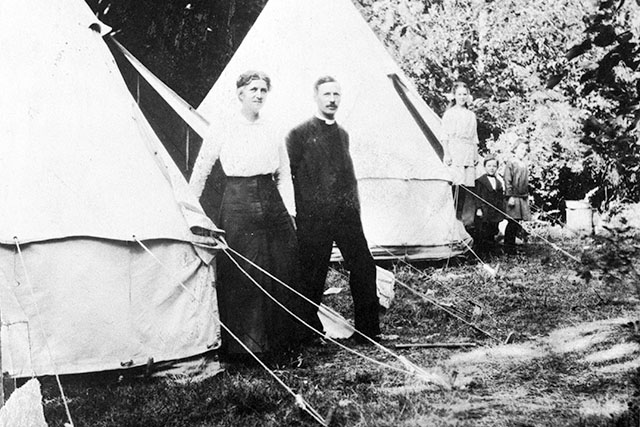
Reverend Jim R. Robertson and Mrs. Christina Sophia Robertson (nee Muir) are pictured here in 1914 standing at the entrance of a bell tent, a style of tent that was common at that time. Three children pose in the entry of a second bell tent.
Wooden Huts
While the Warrant Officer’s Quarters was the only official married quarters at Fort Rodd Hill, families also lived in other buildings temporarily. These included a log cabin built by the Royal Engineers and a wooden hut down by the beach.
During WWI, Lieutenant Albert Robertson lived in the wooden hut by the beach with his wife and young daughters Bernice and Gladys. A third child, Mac, was born in the hut sometime between 1914 and 1916. The Robertsons moved out in October 1916 when Lieutenant Robertson left to command Fort Macaulay.

Captain A.E. Robertson and children Bernice and Gladys are sitting on the steps of the hut where they lived in 1914. In this photo, they are preparing crab and appear to be enjoying their meal.
Permanent Married Quarters After World War II
After WWII, new housing units were built at Belmont Park near Fort Rodd Hill and near Work Point to meet the demand for more married quarters. The old system of a limited number of free married quarters and rations to those on the married list was replaced by providing a combination of better pay and a larger number of married quarters available at reasonable rent. This ensured that military personnel could find affordable housing for their families wherever they were posted.
Family Fun moments at Fort Rodd Hill
It was not all serious business living inside a military fort. The families who lived at Fort Rodd Hill found many ways to enjoy their time here. Picnics, swimming, and fresh seafood dinners brought families together for recreation and relaxation. Playing with dogs, swings, bicycles, and other toys entertained children for hours.
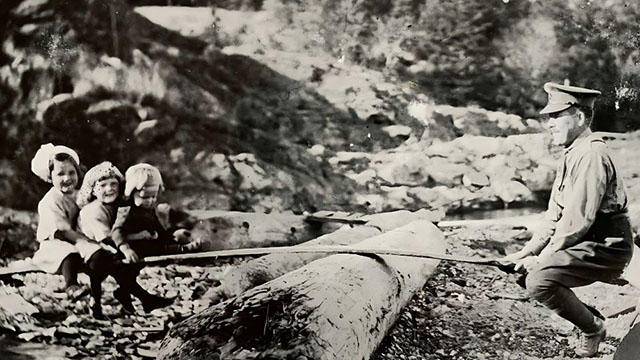
In 1916, A.E. Robertson and his children Gladys, Bernice, and Mac, having fun at the beach with a teeter-totter that looks like it was made with a scrap of wood at the beach. They knew how to make fun with what was at hand.

Lieutenant Albert Robertson and his family are sitting at the beach at Fort Rodd Hill on Christmas Day in 1914. If you look closely, you will see the dolly that has joined the family portrait. Perhaps it was a Christmas gift that morning.
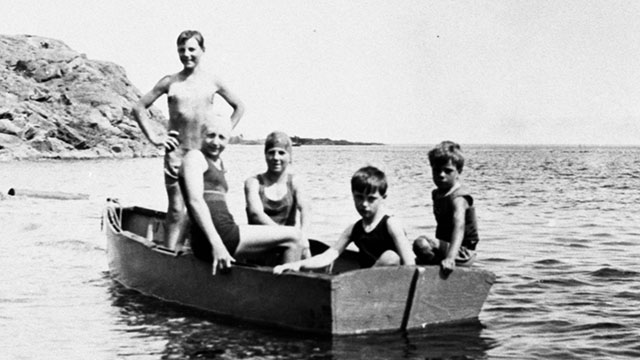
These kids are at Esquimalt Lagoon, which was a bit warmer for swimming than the area directly in front of Fort Rodd Hill. Playing in a boat near the shore looks like a refreshing summertime activity.
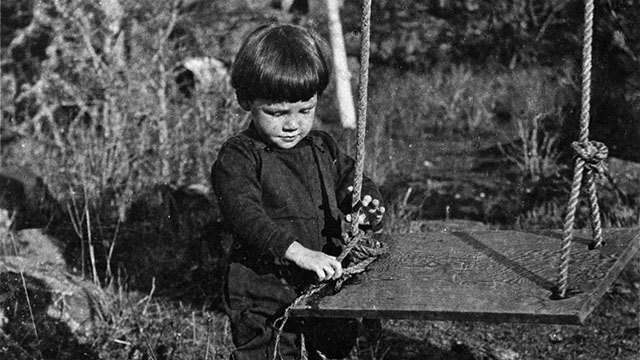
During WWI, toys were often simple and homemade. Here, one of the Robertson kids enjoys a homemade swing on the grounds. Just a simple plank and some rope probably provided hours of fun (circa 1914-1916).
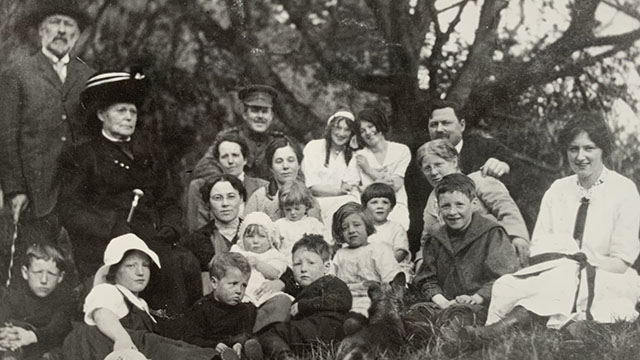
Picnics have been a fun family activity at Fort Rodd Hill for many years. In this photo, the Robertson family is enjoying a picnic (circa 1914-1916).
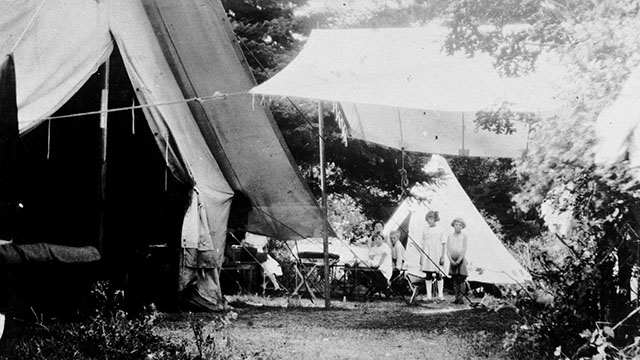
Families camped out under military-style canvas tents with a tarp strung up overhead. Today, families still have fun camping at Fort Rodd Hill by reserving an oTENTik during the summer and exploring the grounds after hours.
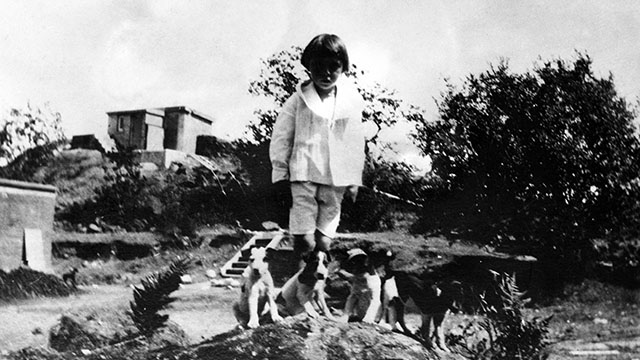
Ashe Collings posed with a litter of puppies sometime between 1916 and 1919, when he and his family lived in the Warrant Officers Quarters.
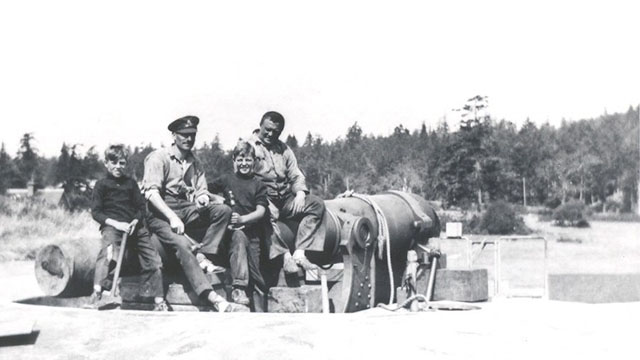
Left to Right - Ken, Titch, Sunny Buxton and Bill Wharton are sitting on top of one of the 6-inch disappearing guns in Lower Battery (circa 1932). The Warrant Officer’s Quarters and battery commanders post are visible in the background on the left.

Jessie Eastick exploring the beach in 1934. Fisgard Lighthouse is visible in the background, long before the causeway was built in 1957.
- Date modified :